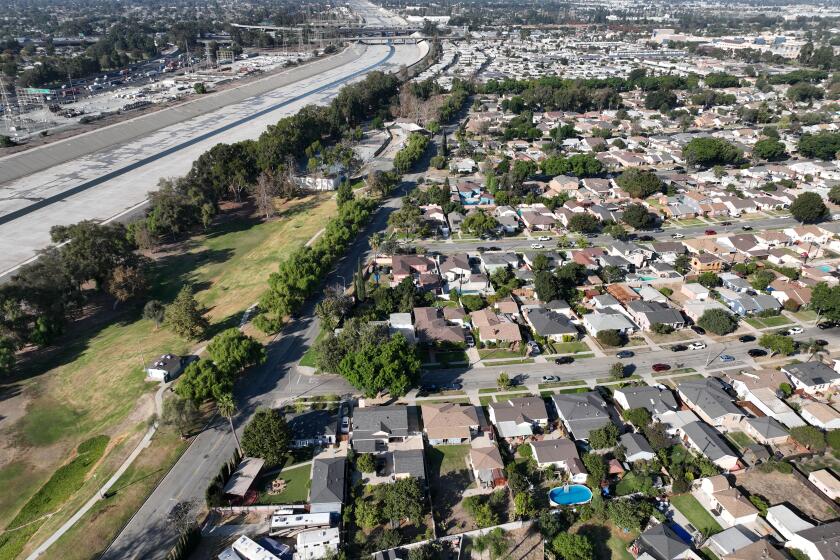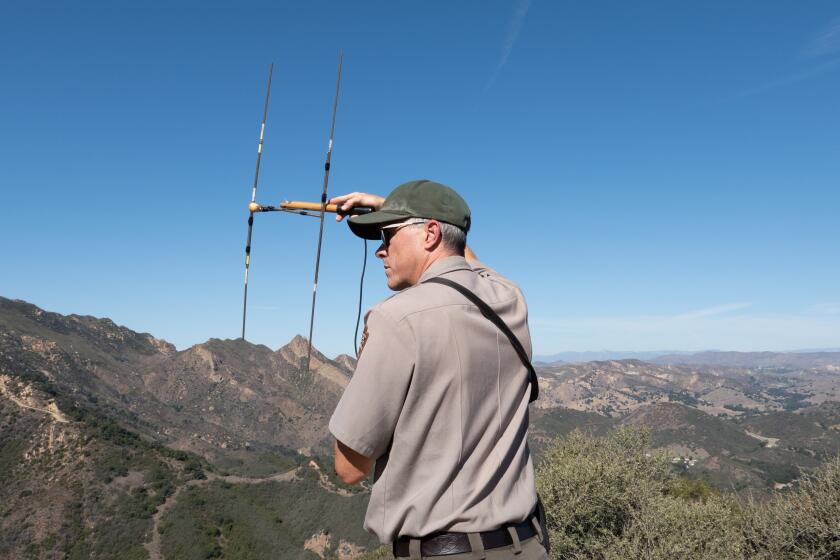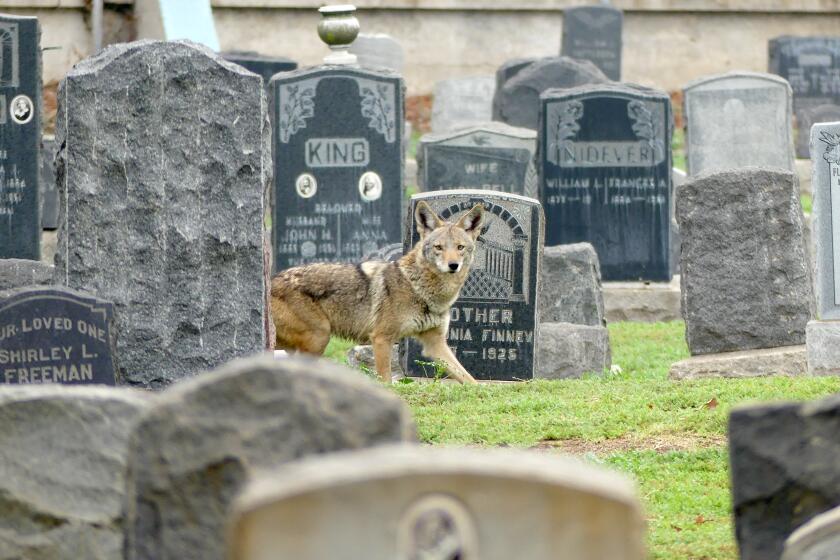Coveted oceanfront land in Ventura County will become a nature preserve
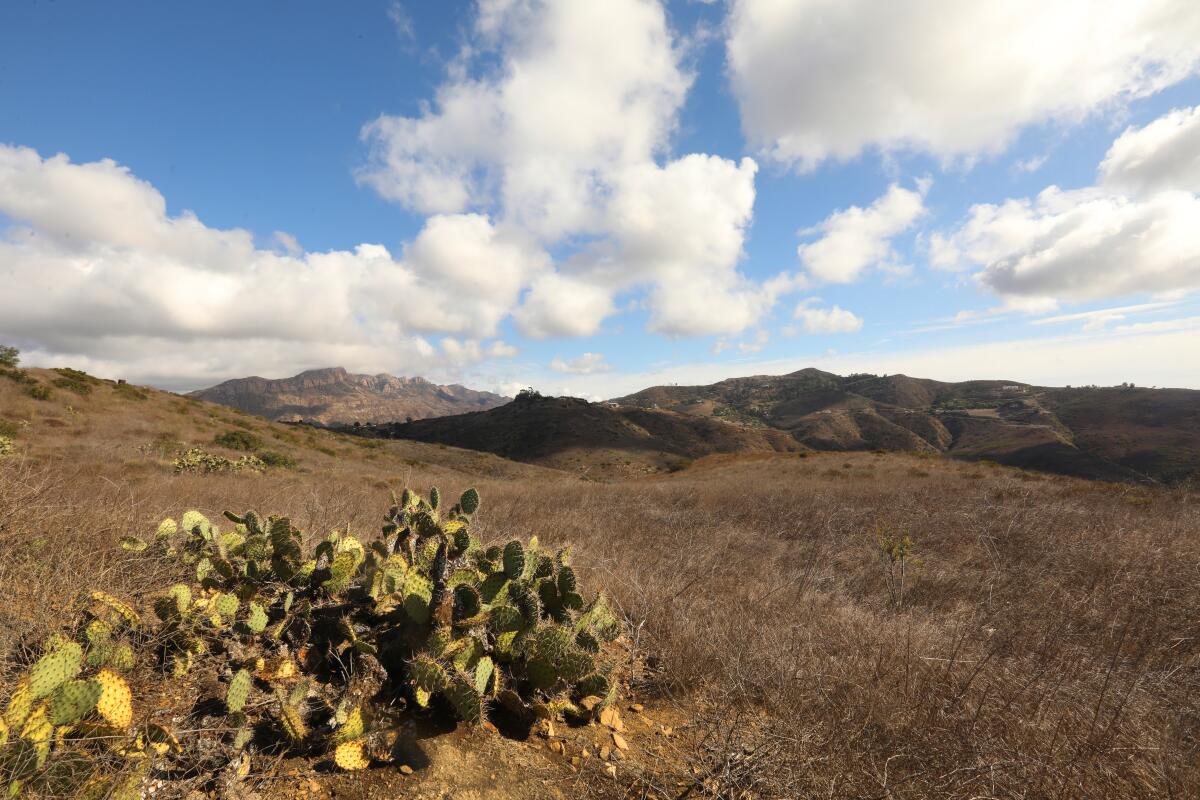
The scene from the privately owned ridgelines just northwest of Malibu is of untrammeled coastline where natural forces continue to unfold: Fog lifts off steep slopes scented with coastal sage that haven’t changed since Chumash Indians roamed them centuries ago.
The only sounds are of surf crashing against the base of fortress-like mountains with panoramic views of dolphins, sea lions and gray whales swimming free about an hour’s drive from Los Angeles.
Legal disputes for decades put a cloud over the future of the 1,250 acres of land just northwest of the Ventura County line that biologists coveted as environmentally valuable, and developers saw as prime real estate in an area where the median price of a home is about $5 million.
The combatants included would-be developer Harry Mansdorf, now deceased, whose family had purchased the property over four decades ago with proceeds from their aircraft business. Their most famous plane was the Pregnant Guppy, a bulbous cargo carrier that ferried moon rocket parts from the West Coast for NASA in the 1960s.
When the dust settled in court, would there be any room left for wildlife?
Researchers say flooding from a 100-year storm could impact up to 1 million people in and around Los Angeles, 30 times more than previously estimated.
A new chapter in the tumultuous history of the area known as Deer Creek Beach opened on Friday when the nonprofit conservation group Trust for Public Land announced that it had purchased the property for about $25 million with the intention of transferring it to the adjacent Santa Monica Mountains National Recreation Area — its greatest growth spurt ever.
On a recent morning, Guillermo Rodriguez, the Trust’s state director, stood on a stretch of windswept beach where Deer Creek flows into the ocean and said, “Everywhere I look here makes me happy, and we are its proud owners.”
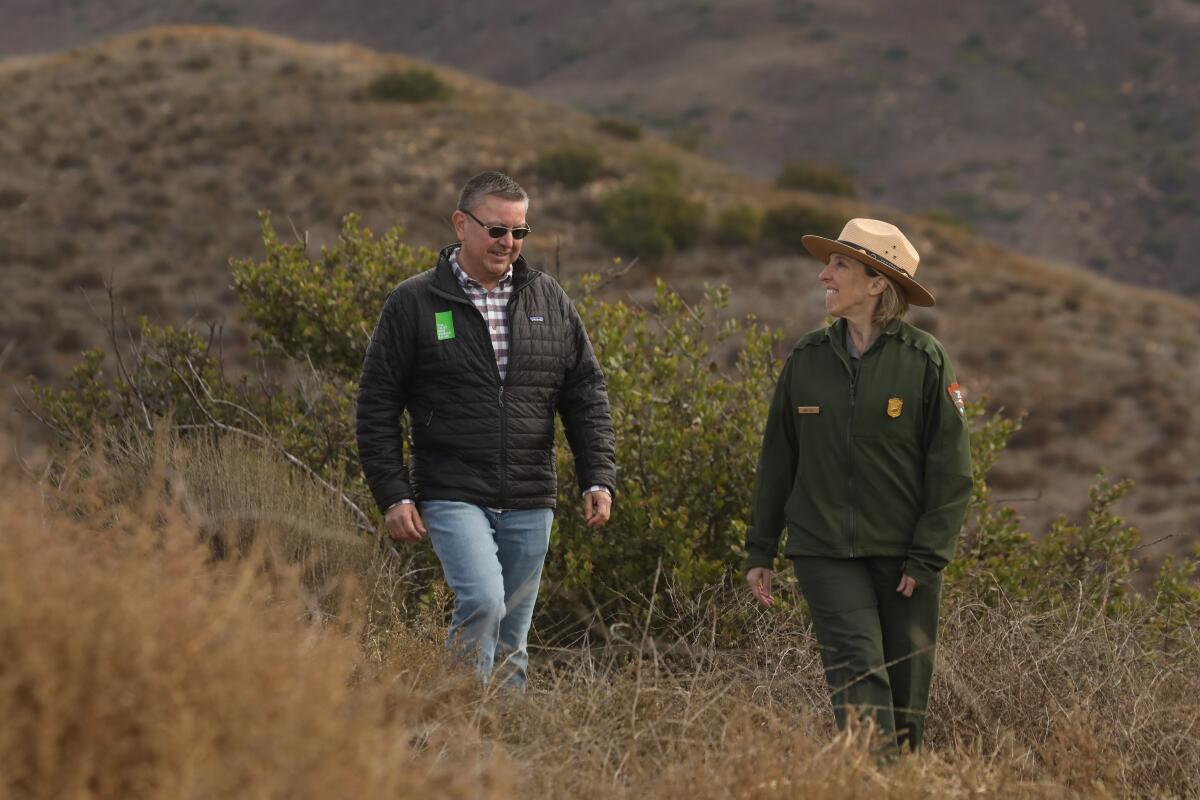
The acquisition highlights a growing belief in Southern California that undeveloped land need not be just another commodity for high bidders.
“Protecting places like this,” said Suzanne Goode, a retired environmental scientist, “lets people know what the Southern California coastline was like before we started developing it.”
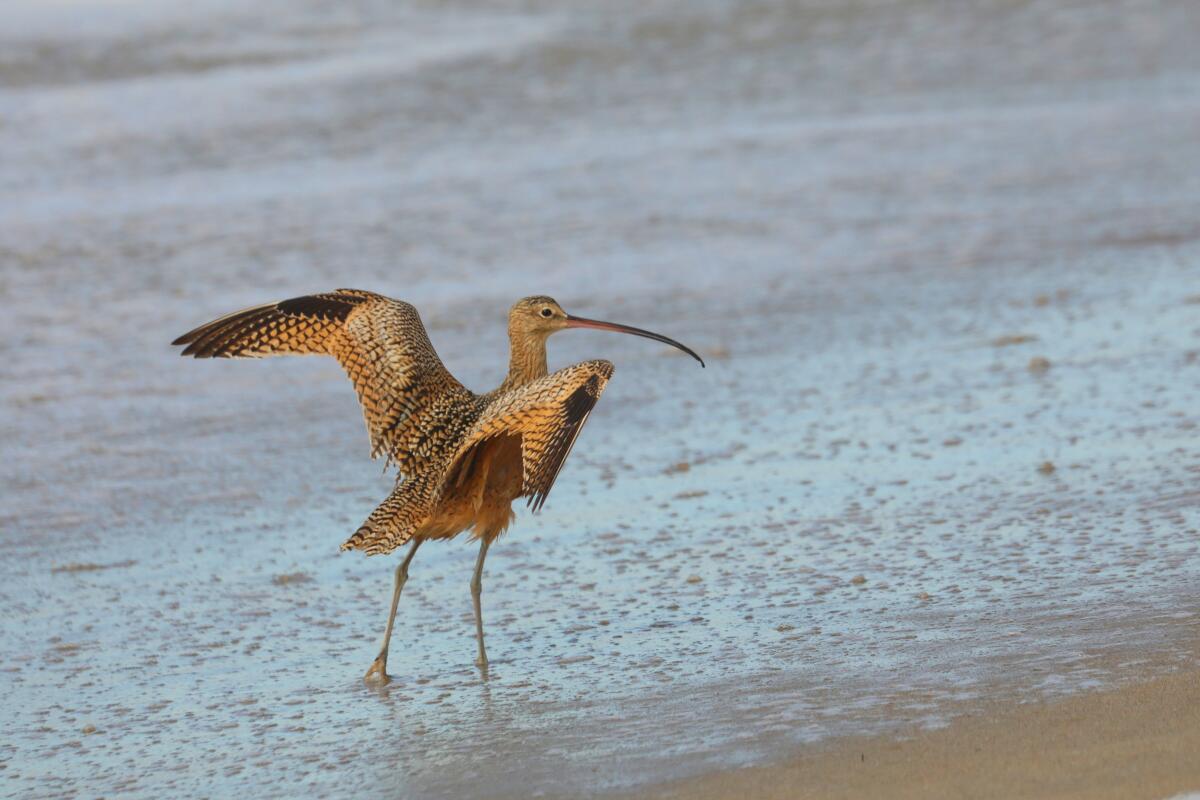
Pausing to collect her thoughts, she smiled and then added, “It’s also a huge win for mountain lions.”
Don’t start cheering yet. It may take another two years “of hard work and planning,” Rodriguez said, to complete the procedures required to bring the property under management of the National Park Service.
Supporters of the project include the National Park Foundation, the nonprofit philanthropic arm of the National Park Service, which provided an operating grant of $529,000, and the Santa Monica Mountains Conservancy. Leading the charge to secure state funds were Assemblymember Jacqui Irwin (D-Thousand Oaks), state Sen. Henry Stern (D-Malibu), and state Sen. Monique Limon (D-Santa Barbara).
As mountain lions seek to avoid wildfire zones, their risks of being hit by automobiles or entering deadly conflicts with other pumas are increasing.
For the record:
8:01 a.m. Nov. 6, 2022An earlier version of this article referred to Point Mugu State Park as Point Magu State Park.
The National Park Service more than 20 years ago targeted the Mansford property as a potentially “high-value acquisition” because it serves as a natural corridor between the Santa Monica Mountains and the 14,000-acre Point Mugu State Park.
Around the same time, Mansdorf, a former B-24 pilot in World War II, devised plans to develop the oceanfront mountains into a destination resort with two 18-hole golf courses, a five-star hotel, condominiums, a man-made lake, and estates.
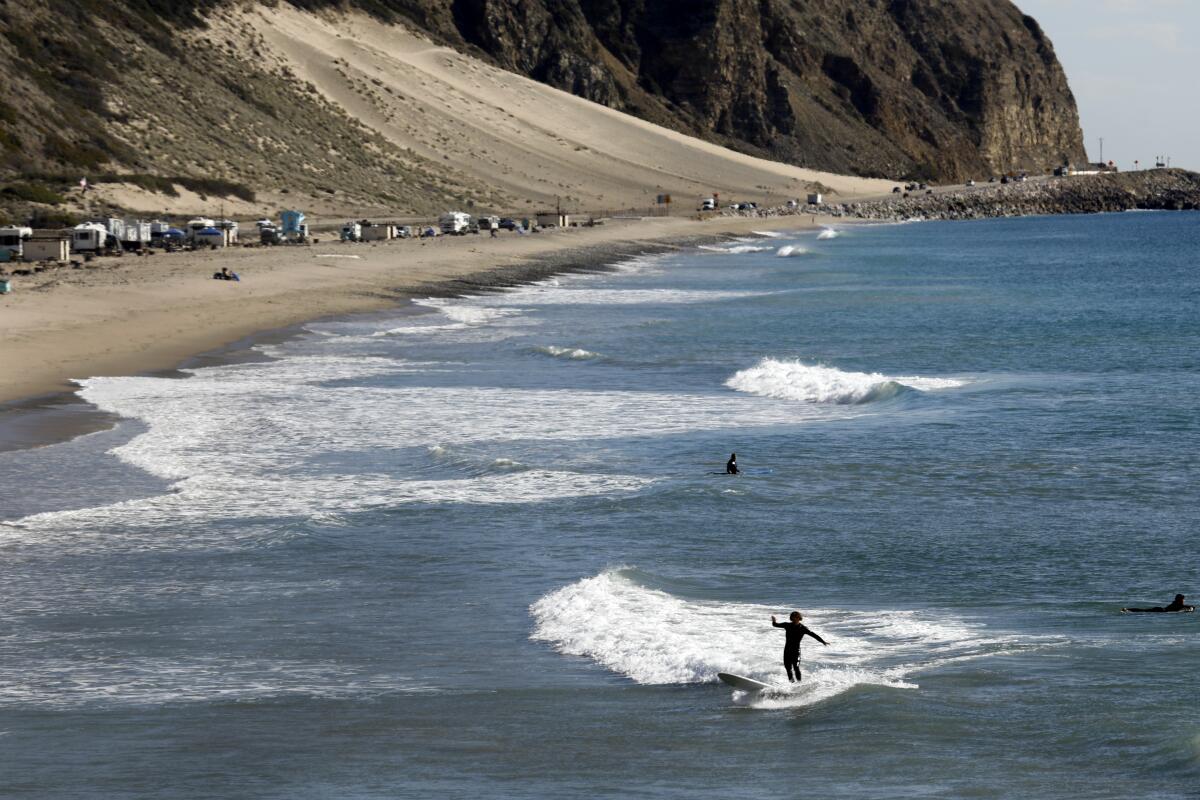
The rocks and gravel bulldozed off the mountaintops to make room for his dream, Mansdorf suggested, would be used as foundation material for a large marina.
All that changed, however, after a fight over ownership with a business partner who a Los Angeles County Superior Court judge in 2009 ruled had used threats and fraud to cheat Mansdorf out of his holdings, which included the family home in Beverly Hills.
At 88, the man who had been worth hundreds of millions of dollars three years earlier was, an attorney said at the time, “living off his World War II pension and looking for 99-cent tacos.”
Mansdorf passed away in 2012 but didn’t leave a will. More lawsuits followed.
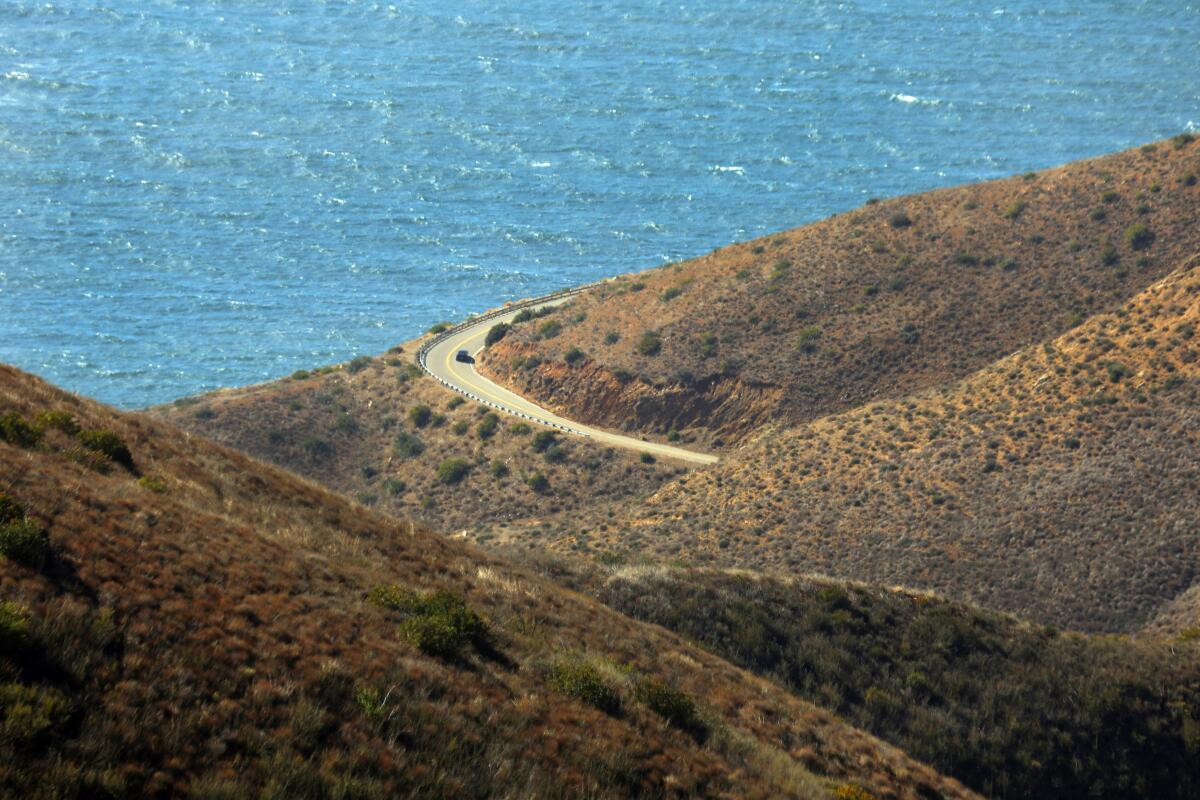
“Several conservation groups made a run at the property,” Rodriguez said, “but they eventually backed off because clear title was the focus of lawsuits, lawyers, creditors, would-be developers, court rulings and liens.”
The clouds lifted in 2018 when a Los Angeles County Superior Court judge determined that the number of claimants had dropped from five to two: County Line LLC, owner of the property; and the principal lien holder on the land.
“We were the first to pick up the phone and express an interest in buying the land,” Rodriguez recalled. “It turned out to be a very, very complex transaction.”
A war on urban coyotes is exposing deep divisions between those who want to eradicate the animal and those who are calling for peaceful coexistence.
The Trust aims to raise an additional $5 million needed to jump-start public access with a series of proposed improvements.
They include restoring a crumbling concrete stairway that leads from parking spaces along Pacific Coast Highway to a sand and rock beach below, and building a segment of the Coastal Slope Trail, a 70-mile network of paths stretching from Topanga State Park to Point Mugu State Park.
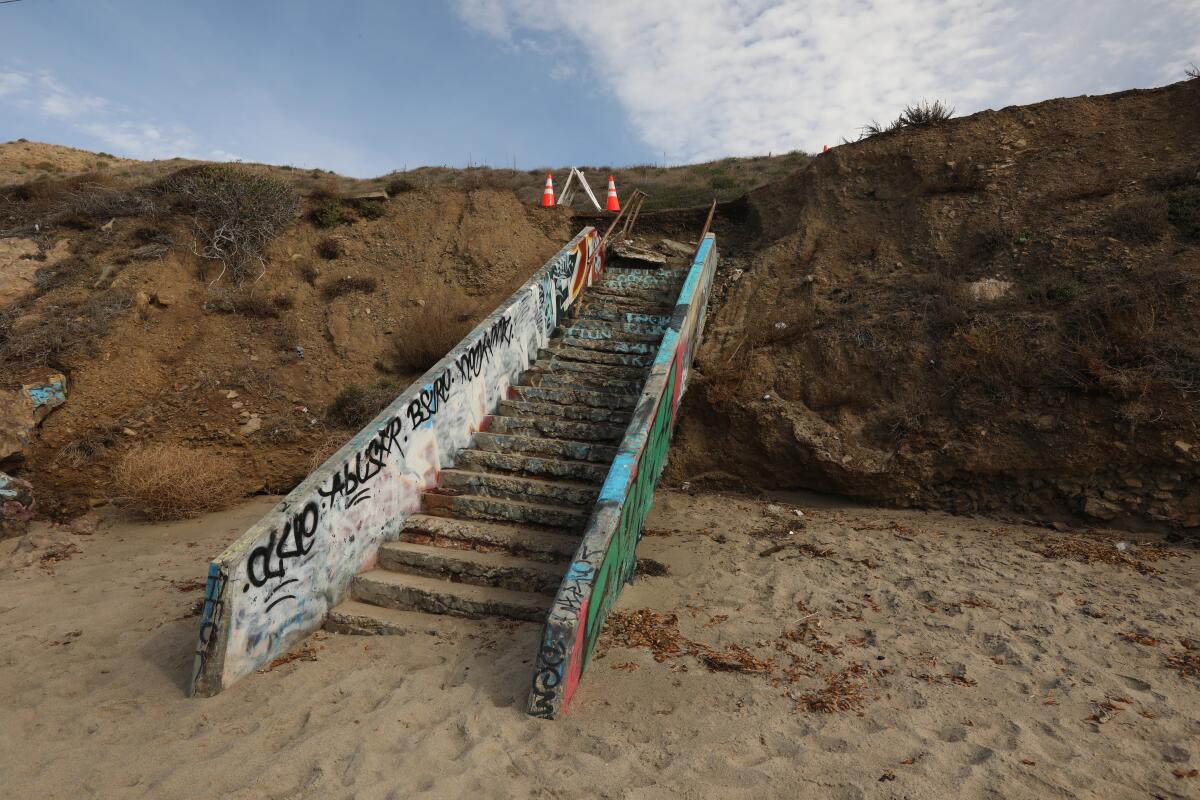
In the meantime, at a separate $97-million acquisition in progress about 70 miles to the south, the Trust aims to transform 384 acres of environmentally distressed scarps, vernal pools and mesas at the Banning Ranch oil field into a nature preserve. That Newport Beach project is expected to be publicly owned in December.
“Land once thought lost forever to development and industry is being reclaimed for wildlife and the health and well-being of the public,” Rodriguez said. “Conservation in California is arduous, frustrating and expensive, but the results are worth it.”
